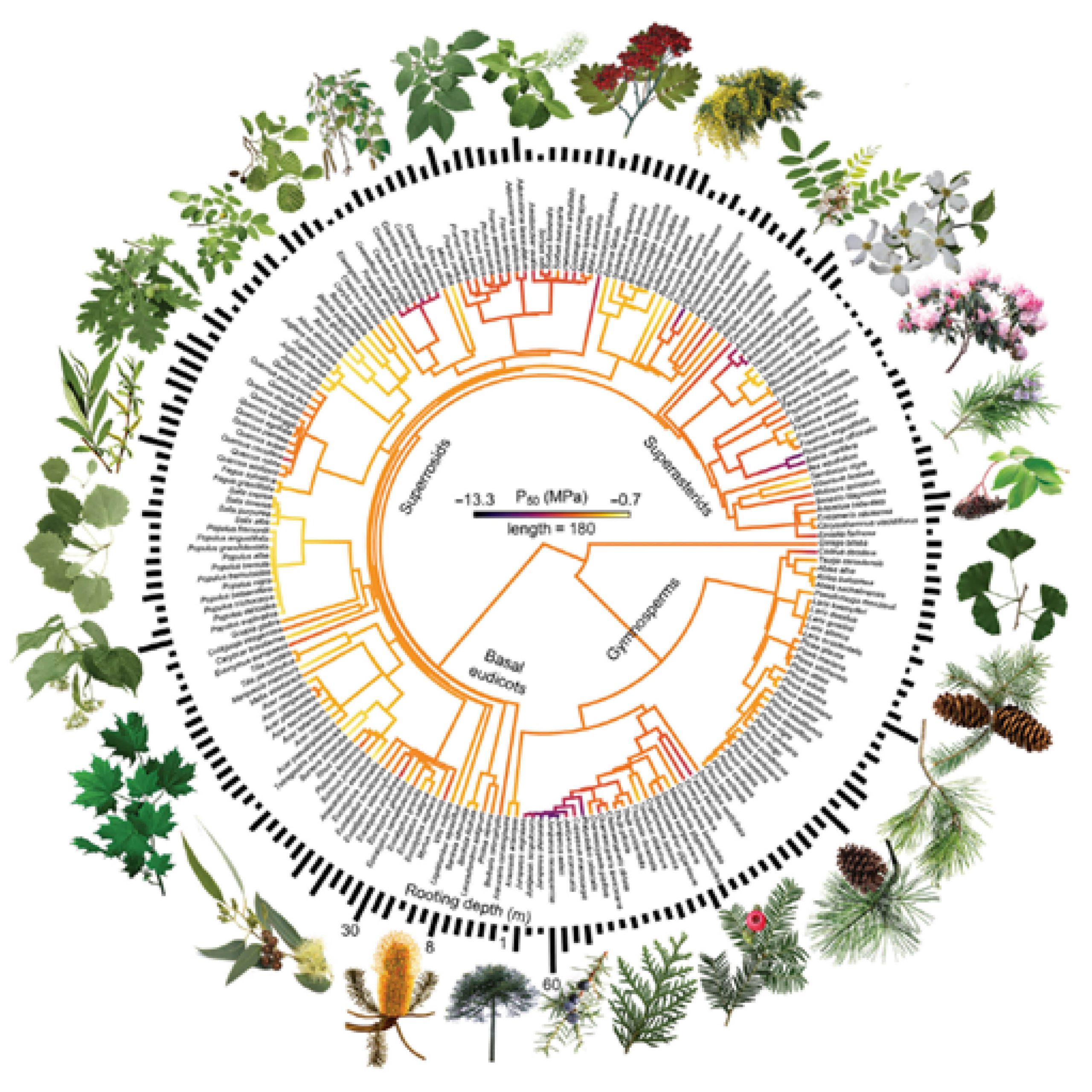W międzynarodowym zespole ekologów badaliśmy ewolucyjną radiację roślin drzewiastych zasiedlających suche siedliska. Ich różnicowanie i adaptacja były możliwe dzięki zdobyciu wielu cech, w tym głębokich korzeni i odpornego na zatory ksylemu. Zsyntetyzowaliśmy globalne zbiory danych cech i roślinności, aby zbadać, jaki jest związek głębokości ukorzenienia i podatności ksylemu na zatory u 188 gatunków roślin drzewiastych z czynnikami środowiskowymi takimi jak susze, sezonowość opadów i głębokość zwierciadła wody. Każda kombinacja wartości cech optymalizuje prawdopodobieństwo wystąpienia w unikalnych warunkach środowiskowych. Reakcje głęboko zakorzenionej roślinności mogą być buforowane, jeśli zapotrzebowanie na parowanie zmienia się szybciej niż głębokość zwierciadła wody pod wpływem zmian klimatycznych.

Abstract
Evolutionary radiations of woody taxa within arid environments were made possible by multiple trait innovations including deep roots and embolism-resistant xylem, but little is known about how these traits have coevolved across the phylogeny of woody plants or how they jointly influence the distribution of species. We synthesized global trait and vegetation plot datasets to examine how rooting depth and xylem vulnerability across 188 woody plant species interact with aridity, precipitation seasonality, and water table depth to influence species occurrence probabilities across all biomes. Xylem resistance to embolism and rooting depth are independent woody plant traits that do not exhibit an interspecific trade-off. Resistant xylem and deep roots increase occurrence probabilities in arid, seasonal climates over deep water tables. Resistant xylem and shallow roots increase occurrence probabilities in arid, nonseasonal climates over deep water tables. Vulnerable xylem and deep roots increase occurrence probabilities in arid, nonseasonal climates over shallow water tables. Lastly, vulnerable xylem and shallow roots increase occurrence probabilities in humid climates. Each combination of trait values optimizes occurrence probabilities in unique environmental conditions. Responses of deeply rooted vegetation may be buffered if evaporative demand changes faster than water table depth under climate change.
Laughlin D.C., Siefert A., Fleri J.R., Tumber-D´avila S.J., … Nowak A….. Bruelheide H. 2023. Rooting depth and xylem vulnerability are independent woody plant traits jointly selected by aridity, seasonality, and water table depth. New Phytologist 240: 1774–1787.
